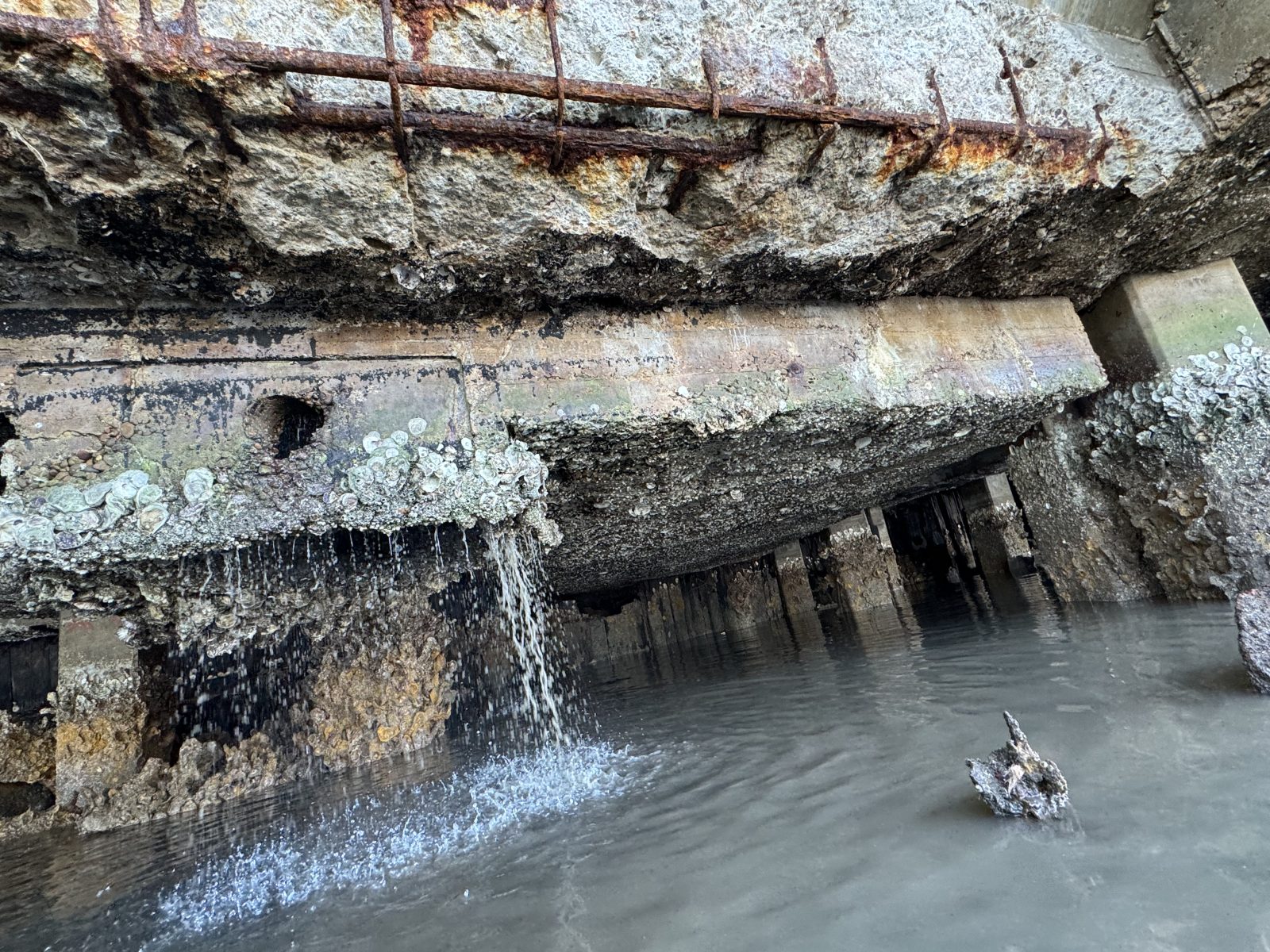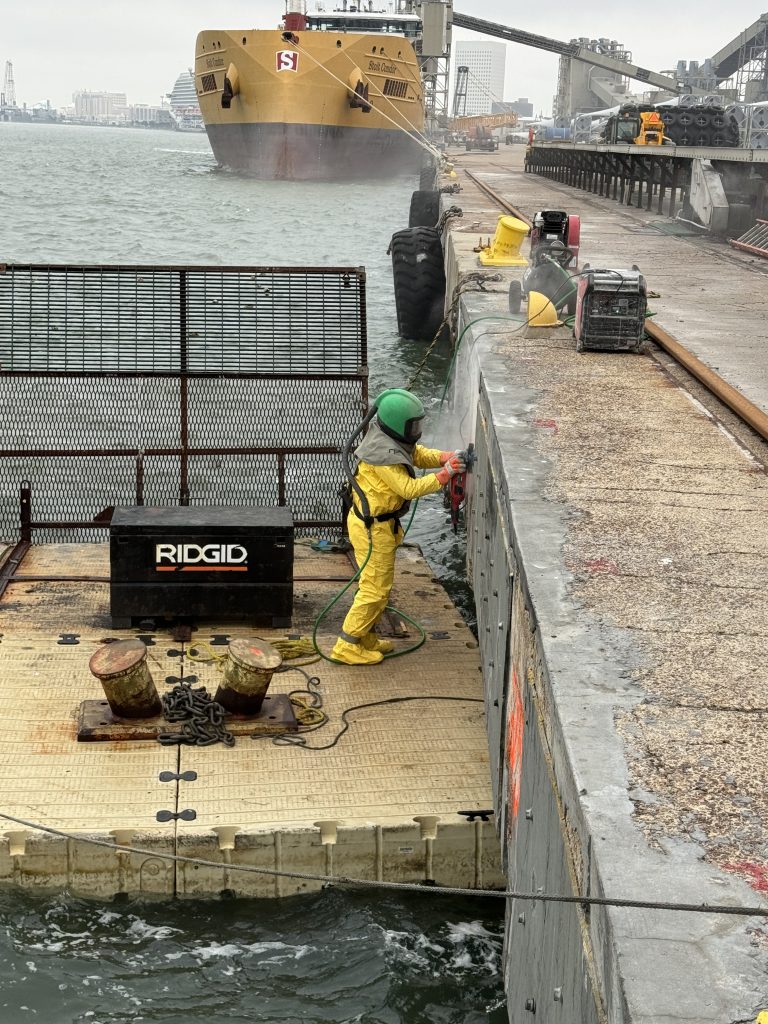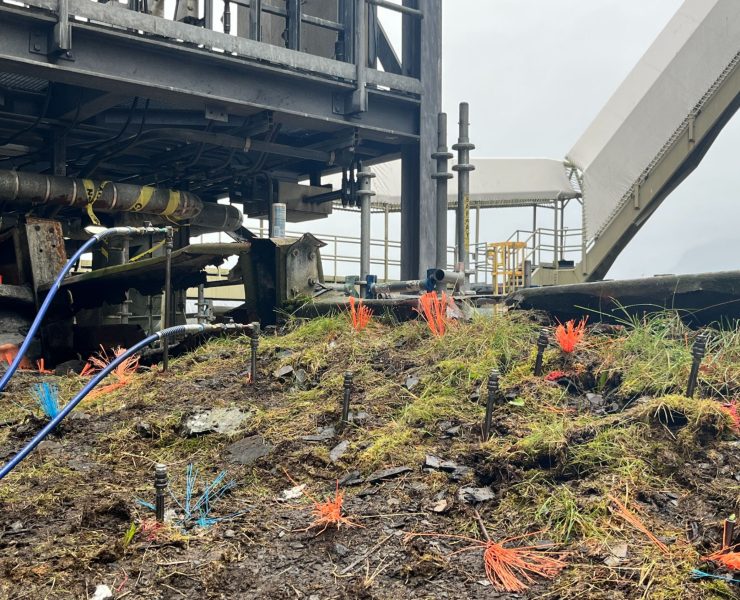Port of Galveston’s Revolution in Repair: Embracing SPiRe®+ Panels for Long-Term Infrastructure Sustainability


A key location for both business and leisure maritime operations is the Port of Galveston. A major participant in the cruise industry, it is one of the busiest ports in the United States. The port facilities’ structural integrity and load-bearing capacity are seriously jeopardized by their proximity to the maritime environment, as field inspections revealed that about 50% of the longitudinal steel reinforcement in the beams had been lost to corrosion.
In addition to raising maintenance expenses, this deterioration presents operational hazards that could interfere with shipping and leisure activities. Beyond the cost of repairs, structural failures may result in expensive downtime and environmental risks, underscoring the pressing need for efficient corrosion control measures.

The Port of Galveston’s options
Concrete structures affected by corrosion can be repaired using a variety of methods, some of which can be combined:
Finding damaged areas, removing deteriorating concrete, cleaning steel reinforcing, and installing chloride-resistant concrete are all part of the concrete removal and replacement process (a).
b) Cathodic Protection: Reduces corrosion by applying external current (Impressed Current CP) and sacrificial anode CP (where reactive metals corrode in place of steel). Both require anode replacement and routine maintenance.
c) Surface Treatments and Coatings: Uses protective epoxy coatings and sealers (such as silanes) to lower permeability, preventing moisture and chloride intrusion.
d) Electrochemical Chloride Extraction (ECE): This technique extends the life of concrete with little physical effort by removing chloride ions from steel reinforcement using an electric field.

Unveiling the SPiRe®+ Solution: Built to Outlast and Perform
SPiRe®+ (Structural Plate Reinforcement) panels bring unparalleled advancements in Fiber Reinforced Polymer (FRP) technology to the marine repair landscape. This patented solution from QuakeWrap®—developed under the visionary leadership of Dr. Mo Ehsani—ushers in a new era where traditional repair methods are left behind in favor of resilient, non-corroding FRP panels that promise longevity, minimal maintenance, and structural integrity.

Unlike the conventional patchwork approach, where steel reinforcement quickly succumbs to salt-induced corrosion, SPiRe®+ panels offer a non-metallic, composite-based alternative that’s built to last decades, even in the harshest conditions. Engineered specifically for high-durability in marine settings, these panels are not just a repair solution—they’re a shield, a complete protective envelope for concrete structures that face daily assaults from saltwater exposure, tidal changes, and atmospheric conditions.

Why SPiRe®+ Panels are a Game-Changer for Marine Infrastructure
QuakeWrap’s SPiRe®+ panels have an innovative design that combines a rigid core with layers of glass FRP, yielding an ultra-lightweight panel that weighs just 2.2 pounds per square foot while offering extraordinary strength and corrosion resistance. Each panel is 3/8 inches thick, but don’t let its slim profile fool you—the tensile strength of SPiRe®+ far surpasses that of traditional steel reinforcements, without the rust and decay issues. The installation process, thanks to the panels’ light weight and pre-formed, stay-in-place structure, transforms what would normally be an extended, disruptive project into a streamlined, efficient operation.
 During the installation at the Port of Galveston, these lightweight panels were quickly maneuvered by divers and secured with anchor bolts. Once in place, the space between the old and new surfaces was filled with non-shrink cementitious grout, creating a strong bond and fully encapsulating the beams. Not only did this ensure robust structural reinforcement, but it also provided a formidable barrier against saltwater intrusion and daily dry-wet cycles that rapidly deteriorate traditional steel-reinforced concrete.
During the installation at the Port of Galveston, these lightweight panels were quickly maneuvered by divers and secured with anchor bolts. Once in place, the space between the old and new surfaces was filled with non-shrink cementitious grout, creating a strong bond and fully encapsulating the beams. Not only did this ensure robust structural reinforcement, but it also provided a formidable barrier against saltwater intrusion and daily dry-wet cycles that rapidly deteriorate traditional steel-reinforced concrete.
The Perfect Solution for the Marine Environment: SPiRe®+ in Action
For marine infrastructure, SPiRe®+ panels are the ultimate choice. Traditional repair techniques, such as cathodic protection or epoxy coatings, can temporarily delay corrosion, but they demand frequent upkeep and fall short of solving the core problem—preventing water and chloride infiltration. SPiRe® + panels offer a permanent, thorough solution. By fully encapsulating the reinforced concrete beams, they shield the structure entirely from corrosive elements, effectively extending its lifespan and vastly outperforming traditional methods in both durability and maintenance.

Dr. Ehsani, the mastermind behind this groundbreaking technology, emphasizes the simplicity and reliability of SPiRe®+ panels: “We’re not just offering a repair. We’re offering a transformation—a way to keep essential infrastructure like the Port of Galveston operational and safe for years with minimal hassle. SPiRe®+ is a direct answer to the marine industry’s most pressing needs.”
A Model for Future Repairs Worldwide: Port of Galveston Sets the Standard
The Port of Galveston has become a model for ports across the globe, demonstrating that sustainable infrastructure repair isn’t just possible—it’s already here with SPiRe®+. Ports worldwide now have an opportunity to rethink their repair strategies and embrace the innovative, eco-friendly, and highly effective technology.

For anyone invested in the future of marine construction, SPiRe®+ panels offer an exciting, reliable, and cost-saving answer. As more ports worldwide explore the potential of FRP technologies like SPiRe®+, we’re entering a new era of efficient, long-lasting infrastructure repair that delivers both economic and environmental value.

















